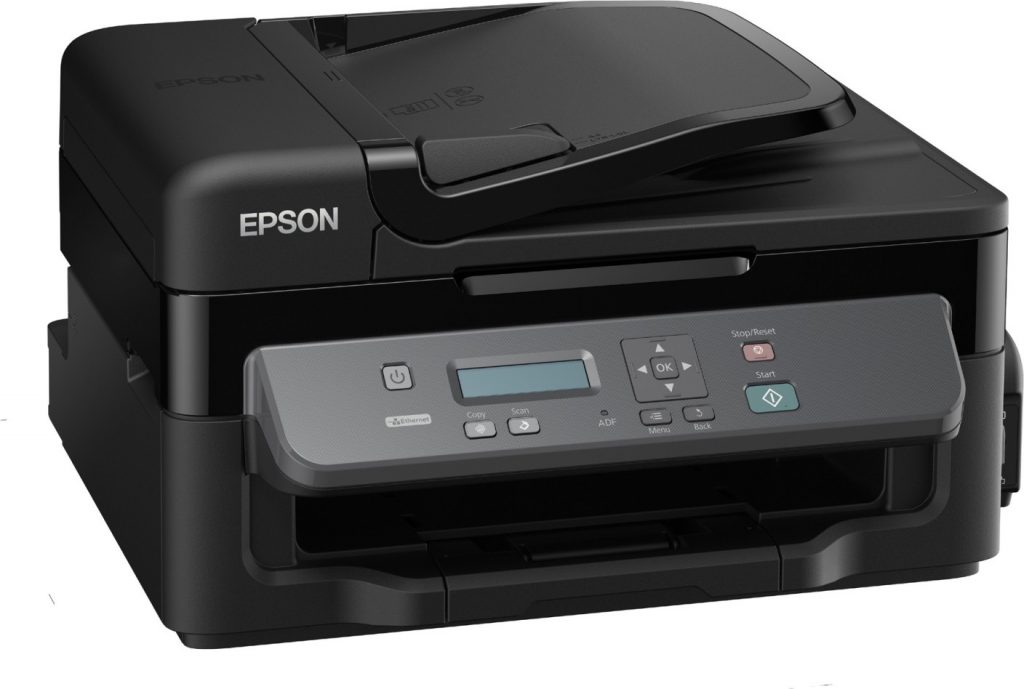 There are numerous reasons why you don’t get as many pages out of your cartridges as you expect on the basis of what is written on the box. The obvious is that the pages you’re printing require more ink than the standardized metric of “5% coverage”. However, another equally common and possibly more resolvable reason for low cartridge yields is clogged nozzles in the printer head. This is a very common problem that shows up with some printer brands more than others. For example, as good and economical as Epson printers are, they’re also notorious for clogged printhead nozzles.
There are numerous reasons why you don’t get as many pages out of your cartridges as you expect on the basis of what is written on the box. The obvious is that the pages you’re printing require more ink than the standardized metric of “5% coverage”. However, another equally common and possibly more resolvable reason for low cartridge yields is clogged nozzles in the printer head. This is a very common problem that shows up with some printer brands more than others. For example, as good and economical as Epson printers are, they’re also notorious for clogged printhead nozzles.
There are solid reasons why this happens and even more solid reasons why this happens with Epson printers so much. In a nutshell, though, it is about the correlation between the advancement of technology and the shrinking of size. For example, most modern-day technological advancements involve a reduction in size. In the case of printing, the reduction of printer nozzles in diameter actually helps print quality. So, it is a dual-sided coin. Epson printers get clogged printhead nozzles because they offer such excellent print quality. Let us explain.
The Cause of Clogs
Clogging means when the nozzles of a printhead get blocked due to air or ink. It usually happens when ink gets dried within the nozzles. There are many others reason why a printhead causes clogs. Let’s find out!
- Excessive use of empty cartridges can produce air bubbles in the printhead which can cause clogs.
- When you forget to turn off your printer and the ink dries up.
- Another cause of clogs is, using a printer after a longer period. The ink gets dried in the unused printer.
The Inevitable Problem of Clogged Print Head Nozzles in Epson Printers
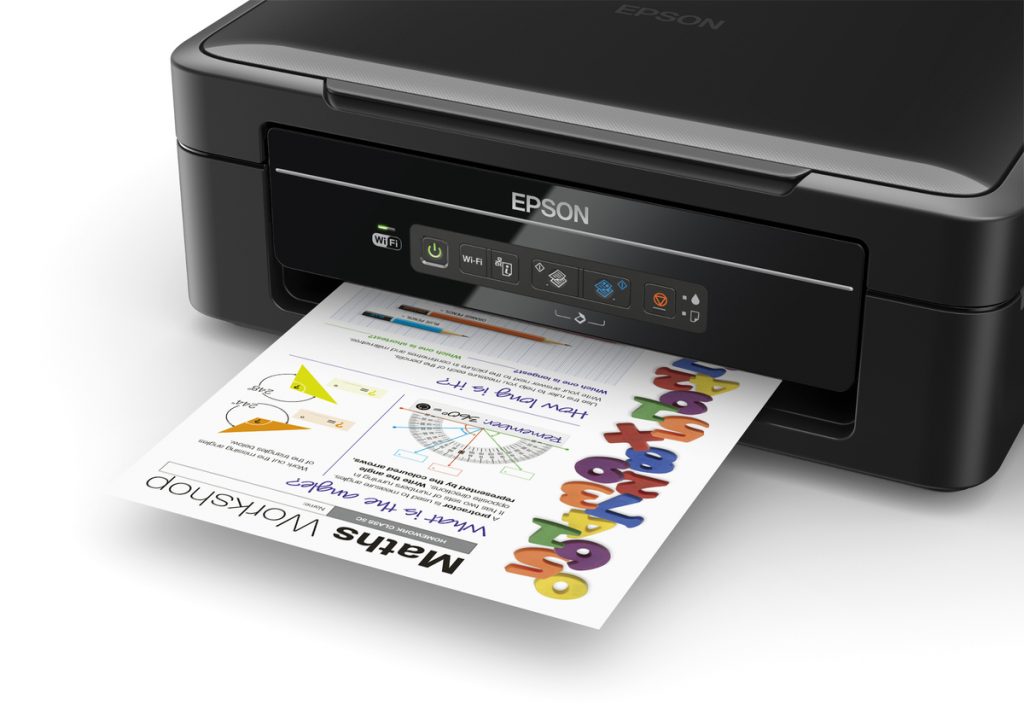 Here’s a myth: You will never get clogged printhead nozzles if you use genuine or Original Equipment Manufacturer (OEM) cartridges.
Here’s a myth: You will never get clogged printhead nozzles if you use genuine or Original Equipment Manufacturer (OEM) cartridges.
Here’s another myth: You will not get clogged printhead nozzles if you keep running printhead cleaning cycles.
Both these myths have misled most printer users. They’re both wrong, of course. If you use generic or compatible cartridges from a reliable aftermarket company or third-party seller, it will be just like you’re using genuine cartridges. It is only a box containing ink, after all. The majority of printer users have already discovered this and have ended up saving a lot because of it.
The other myth is more difficult to debunk because of the nuances involved. Printhead cleaning cycles are useful to push out air blocks from the nozzles. In some cases, they can even help with dried ink but the problem has to be minor for them to help. Solids will always be able to hold back liquids provided they’re thick enough. With regular use, dried ink will get thick enough in your nozzles.
If you run loads of print head cleaning cycles to counter it, you’ll get some temporary reprieve. All that ink that the print head cycle is pushing through the nozzle to unclog it, where do you think it goes? It stays and dries up again in a day or two. This is why you get clear prints after running multiple print head cleaning cycles only to face the same problem again the next day.
Take the Print Head Out and Wipe the Nozzles
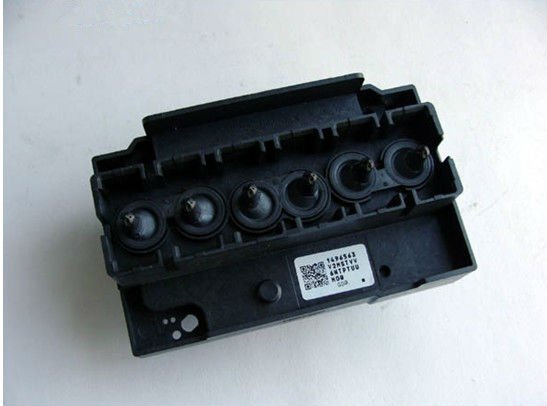 This is the obvious solution for most printers because their print heads are detachable. This is also the reason why many OEMs have designed their printers in a way that the print heads are a part of the cartridges as opposed to the printers. In the case of Epson printers, though, this is a problem. Do you remember how excellent the print output quality of Epson printers is? Well, that is made possible by their print heads being especially advanced. This, in turn, is possible because the print heads are a permanent part of the printers.
This is the obvious solution for most printers because their print heads are detachable. This is also the reason why many OEMs have designed their printers in a way that the print heads are a part of the cartridges as opposed to the printers. In the case of Epson printers, though, this is a problem. Do you remember how excellent the print output quality of Epson printers is? Well, that is made possible by their print heads being especially advanced. This, in turn, is possible because the print heads are a permanent part of the printers.
They’re not easy to remove without the common man. This means that you can’t just unclip them or pull them out to wipe them. Since you can’t wipe them, the problem of clogged printhead nozzles becomes particularly annoying. Invariably, this means that you either have to really delve into the manual with multiple tools to be able to bring the print head out or call for service.
One requires an inordinate investment of time, which is precious, while the other means spending more money. Neither of these options is attractive to a printer owner, especially since buying and running printers already cost a pretty penny, these days. A much better option will be to prevent this problem from occurring in the first place.
Keeping Epson Printers Clean
 The primary culprit in the problem of clogged printhead nozzles, whether in Epson printers or otherwise, is air. Air blockages are fairly common, particularly because nozzles are becoming smaller, with every little bit of technological advancement. The next big culprit is, of course, dried ink.
The primary culprit in the problem of clogged printhead nozzles, whether in Epson printers or otherwise, is air. Air blockages are fairly common, particularly because nozzles are becoming smaller, with every little bit of technological advancement. The next big culprit is, of course, dried ink.
In addition to these suspects, though, you also have to take into account dust. Dust can often accentuate the problem. Air can take the dust inside the nozzles while ink can turn into minute portions of grime when it combines with dust. It is an undeniable fact that dirty printers are more prone to getting clogged printer nozzles. This means regular cleaning of your printer becomes more important than you imagined earlier.
Keeping the printer clear is an exercise in common sense. Keeping it clean on the outside reduces the chances of the insides getting dirty and makes it look better. Cleaning the insides is where you need to be careful though. Being gentle is the first thumb rule because some components are delicate and based on precision engineering. Next, using lint-free napkins or cloth is important or the lint itself will clog the printhead nozzles.
The best way to clean the insides of a printer is with an air duster or vacuum. You either blog the dust away or suck it out. The latter is a better option because it is more direct and reliable.
Turning Printers Off At Night
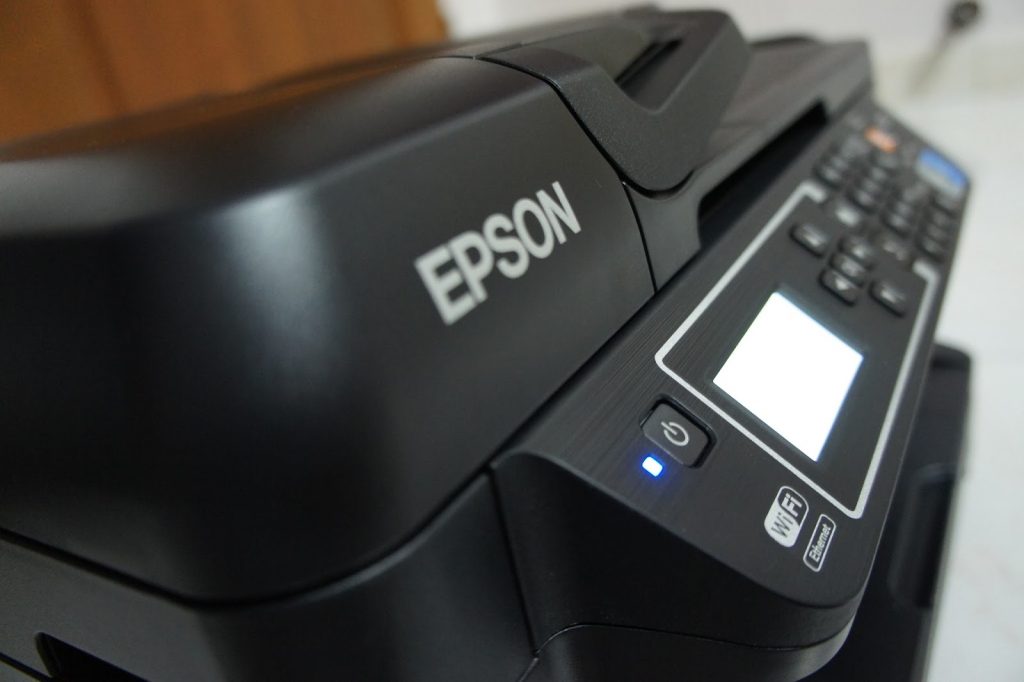 All printers have this system where they run a small print head cleaning cycle when they’re turned on. This can be dubbed anything from the maintenance cycle to “prepping” in the manual. It is really just a mini print head nozzle cleaning cycle. In this cycle, the printer pulls out a little bit of ink through the nozzles to keep them lubricated.
All printers have this system where they run a small print head cleaning cycle when they’re turned on. This can be dubbed anything from the maintenance cycle to “prepping” in the manual. It is really just a mini print head nozzle cleaning cycle. In this cycle, the printer pulls out a little bit of ink through the nozzles to keep them lubricated.
These cycles are beneficial to the printer and reduce the chances of clogged printhead nozzles. The problem is that most printer owners never turn their printers off. If you don’t ever turn it off, it will never be turned on. This means that these mini-cycles don’t get to run and protect you. Therefore, it is always a good idea to turn your printer off at night. When you turn it on in the morning, you’ll hear the happy whir of this cycle.
Printing Regularly
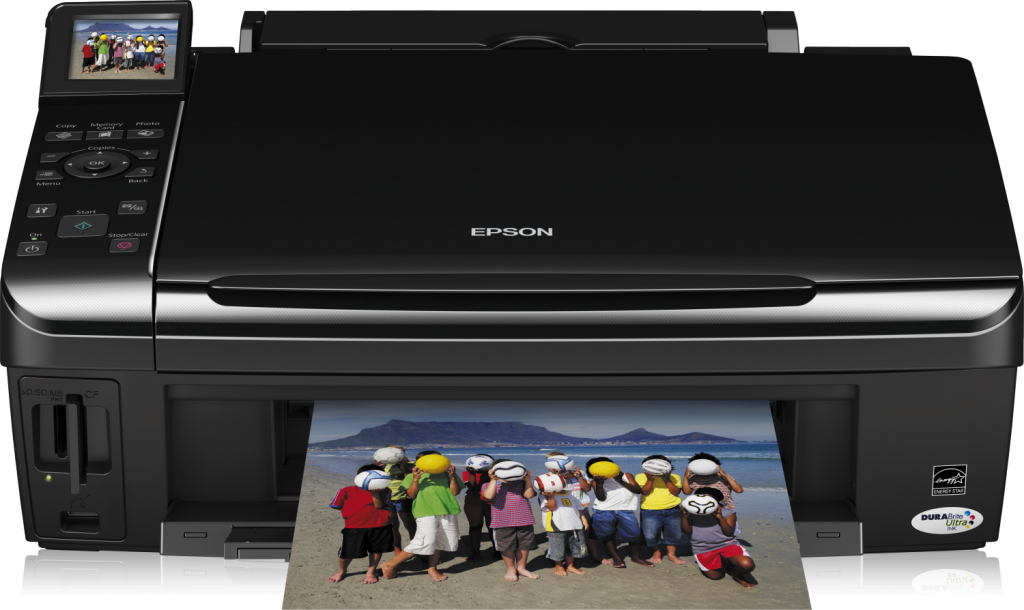 This is the traditional advice when it comes to printer maintenance. Regardless of whether it is air, dust, or dried ink, your printer will only develop the clogged nozzle problem if you don’t use it often enough. If you use it regularly, the ink will flow through it regularly. This regular flow will prevent any negative air pressure from the building, dust from entering the aperture, and ink from drying up in it.
This is the traditional advice when it comes to printer maintenance. Regardless of whether it is air, dust, or dried ink, your printer will only develop the clogged nozzle problem if you don’t use it often enough. If you use it regularly, the ink will flow through it regularly. This regular flow will prevent any negative air pressure from the building, dust from entering the aperture, and ink from drying up in it.
Therefore, one of the easiest and simplest ways of countering the clogged print head nozzle problem in Epson printers is to use them regularly. You should, ideally, look at the recommended minimum monthly duty cycle and try to calculate what it means in terms of daily printing. Even if you manage to do half of that target daily, your printer should be safe and reliable.
Avoiding More Than Three Print Cleaning Cycles
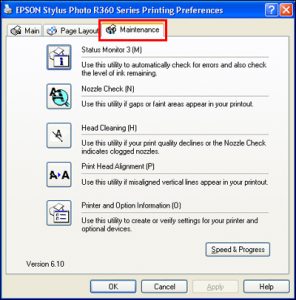 It is almost addictive to run a print cleaning cycle, the moment you see something off in your output quality.
It is almost addictive to run a print cleaning cycle, the moment you see something off in your output quality.
It is also very easy to spam print cleaning cycles when the problem is not getting solved. This addiction or obsession needs to be resisted, however.
You cannot run more than three print cleaning cycles at a time. Running any more than three such cycles will result in a build-up of ink in the print head nozzles.
And, as we’ve learned already, this ink will soon dry and give you problems, if not tomorrow then very soon.
Use the Right Variety of Cartridges
 In the ideal world, you’ll be able to use genuine cartridges but the Razor Blade business model adopted by all printer OEMs means that OEM cartridges are unbelievably expensive. Even well-to-do individuals have trouble handling the cost of constant ink cartridge replacements. Estimates put the cost of ink to be higher than petrol, Chanel perfume, and even blood. Hence, it is unrealistic for anyone to expect you to use only genuine cartridges.
In the ideal world, you’ll be able to use genuine cartridges but the Razor Blade business model adopted by all printer OEMs means that OEM cartridges are unbelievably expensive. Even well-to-do individuals have trouble handling the cost of constant ink cartridge replacements. Estimates put the cost of ink to be higher than petrol, Chanel perfume, and even blood. Hence, it is unrealistic for anyone to expect you to use only genuine cartridges.
Compatible or generic cartridges are the alternative. If you find the right seller of these cartridges, you can end up saving tonnes of money without compromising on quality or maintenance costs. When it comes to compatible or aftermarket cartridges, cost, and quality don’t have to be mutually exclusive. Just look at the prices we offer at Inkjet Wholesale and see the quality you get for these prices.
Why don’t you mention CISS ink systems. I have used them for years in Epson and Brother printers. Never have I had a problem.
Hi Stewart,
CISS systems are ideal for high volume users. Moreover, the community of CISS users is relatively smaller than your typical OEM or aftermarket cartridges users. Besides, won’t clogged nozzles be a problem with CISS systems as well?
Even so, since you’ve mentioned it now. I will make sure to mention CISS systems in future posts, where relevant.
Thanks for dropping by.
Great article guys, the air was a key point and i think the cause of our issues. We bought a ton of generic ink of alibaba and experiencing clogging non stop with all our printers 🙁
Hi Stu,
Alibaba may not be the best source for getting cartridges. Have you tried us before? Here’s our store – Inkjet Wholesale
An excellent article, Shaleen. Thank you for sharing your insights. I have had an Epson WF 3460 that printed well for just less than 3 years but then 4 months ago started absolutely refusing to print cleanly. I tried the built-in cycles, new ink cartridges,an aftermarket nozzle cleaning kit, and with nothing left to lose: removing and cleaning the print head (still no success). Though you accurately point out the near-criminal “razor blade” business model, I think you may be letting Epson (and all manufacturers of inkjet printers perhaps?) off the hook for their planned obsolescence of these devices. I for one am at the level of frustration that I will most likely be switching to laser; from what I am reading the toner never “goes bad” or clumps as long as the printer runs in the proper environment, though there will no doubt be a different set of challenges to maintain it. Still from my extensive reading up on my options for both repairing my Epson, and replacing it, your article seems to hit a sweet spot of acknowledging the intrinsic issues, and giving a few good practical tips…even though it is just delaying the inevitable failure from the Faustian bargain that is inkjet ownership. Keep up the nice work!
Thank you so much Jason.
This is by far the most detailed and positive review I’ve received on this blog.
Laser is a good bet if you don’t need to print photos a lot. It also ends up being more cost-effective in the long run, if the right printer is chosen vis-a-vis requirements.
p.s. We do have to go easy on the OEMs since they also (surprisingly I know) read such blogs and have an army at their disposal.
I am on my second Epson workforce Printer because of clogged nozzles. I am a self employed technical person and the printer is used regularly although not high volume and may sometimes sit for a couple of weeks not being used when I am away. (two or three times a year) My second workforce printer is now clogged up. Luckily I bought a warranty because of the issue with the first one. They do not last more than two years!! EPSON TAKE NOTE! I WILL NEVER BUY ANOTHER EPSON!!!
I like the functionality of the Epson workforce series. Its why I bought the same one a second time. Never again though. Two years for a relatively expensive inkjet multifunction unit is crap!
I was going to purchase ink from you but I could not find a listing for the Epson Stylus NX515,, ( I found a listing for the NX420 which I assume is an older model,, ).
The reorder tag in my printer says to use;
#69-standard capacity
#68-high capacity
#97-extra high capacity (for black only)
These are common cartridges so I will assume that you can supply them,,
Also I watched a you tube video that explained 4 different types of cartridge housings with one style being superior to the others,, Are you familiar with this subject??
Looking forward to you replay,, 🙂
Dan
Hello Dan
Thanks for your question. We only sell cartridges to the Australian market I’m sorry. The NX515 appears to be a printer that is not being distributed in Australia. The NX420 you mention is available here, but these take the T133 and T138 ink cartridges.
There are 3 versions of cartridges though that are in this family form Epson
1. The T133 are the standard yield.
2. The T138 are the high yield.
3. The T140 are the extra high yield.
I suspect your NX515 is the same as our NX625 here below:
https://www.inkjetwholesale.com.au/printer/epson/stylus-nx635/8278/
These are the higher end printers that take only the high yield and the extra high yield ink cartridges, in this case, the T138 and the T140.
Hope this helps a bit for you Dan.
Regards
Glenn Taylor
Amazing post!
Very helpful, you nicely describe about Epson printer clogged print head nozzles.
Thanks.